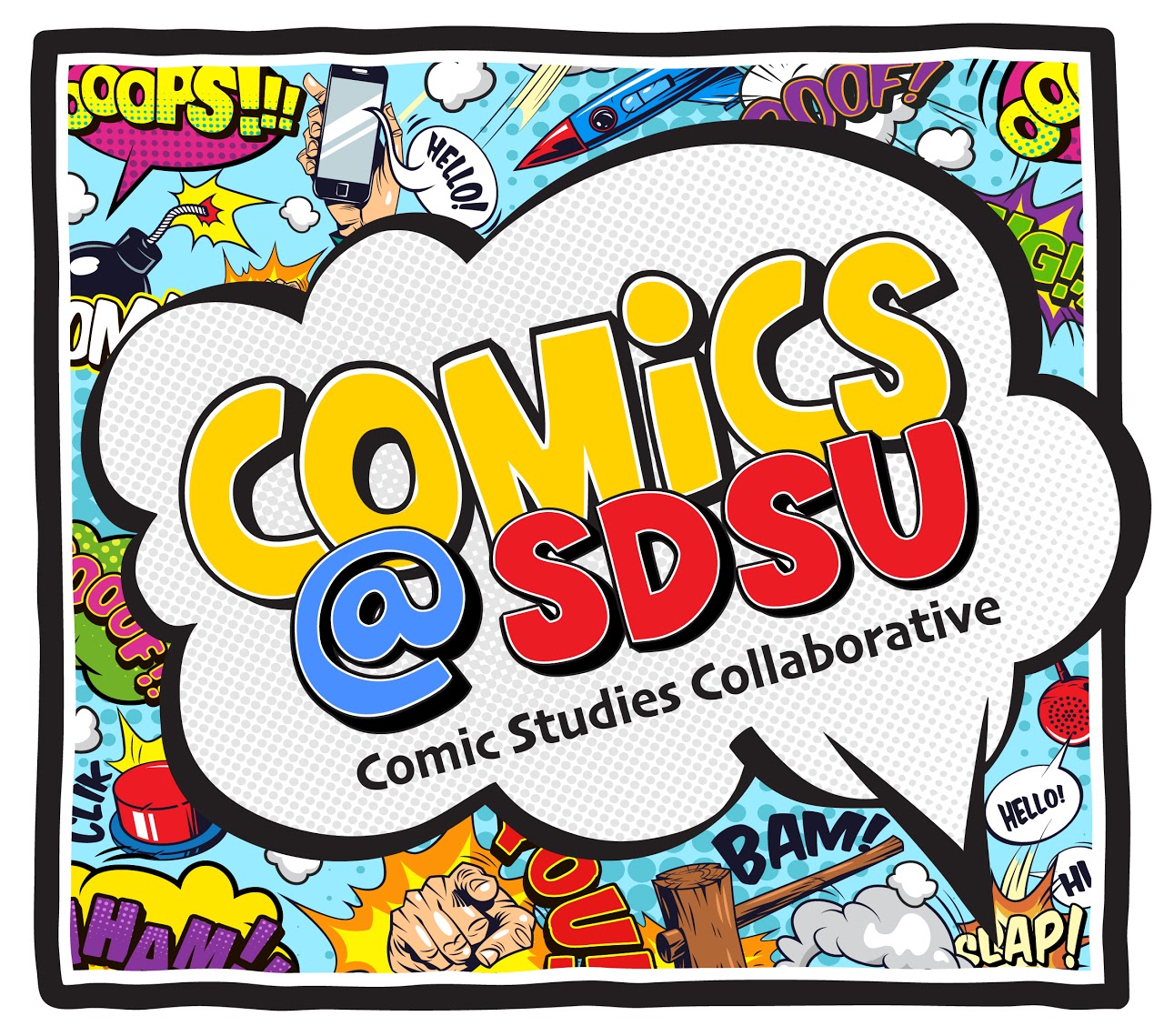Written by
Katie Sciurba
San Diego State University
As I designed Comics for K-12 Educators, I repeatedly heard the voices of several of my former teaching credential students echoing in my head, “Comics aren’t REAL literature,” “Captain Underpants doesn’t count as READING,” “I don’t even ALLOW comics in my classroom!”

My goal was to find a way to convince students like this, current and future K-12 teachers, that comic texts are one of the most vital resources we have for raising young people’s socio-political awareness and critical consciousness – not to mention their literacy skills (from decoding to vocabulary development to visual analysis). I mean, what better way to interrogate colonialism than through a discussion of Black Panther’s Afrofuturistic world of Wakanda? (See Timothy Welbeck’s brilliant analysis of the “hidden messages” embedded in the Black Panther series.)
But where did all of that comic negativity begin?
Enter Fredric Wertham, a child psychologist whose book, Seduction of the Innocent (1954), turned him into a real-life villain of comic books – at least that’s how many comic fans view him. In short, Dr. Wertham claimed (through dubious research methods) that comic books caused juvenile delinquency and would inevitably lead young people toward lives of crime and violence. His arguments, which led to comic censorship (detailed beautifully by the Comic Book Legal Defense Fund), continue to reverberate today. In TE 579, students have the opportunity to read directly from Seduction of the Innocent so they can determine for themselves whether or not it is, in fact, a good idea to keep comics (even if only some comics) out of the hands and hidden from the eyes of young readers. Throughout the course, we will return frequently to conversations related to comic (and other) book bans and censorship.
As students move into the course, they independently select and read a number of comic texts – prompted by parameters intended to push them out of their comfort zones. In addition to reading books that are popular among elementary students, like Dav Pilkey’s The Adventures of Captain Underpants and Adam Blabey’s The Bad Guys, they are required to read comics that center Indigenous, Women of Color, and Queer heroes. They must read about Critical Race Theory, as applied to the study of comics (via the work of Michael Dando), and they must explore the propagandizing comics of beloved figures like Dr. Seuss. Students also explore the topic of “Belongingness” via comics like the X-Men, an important idea to discuss when working with children, adolescents, and teens.
Ultimately, students in this course will read enough comic and scholarly texts to make informed decisions about the reasons some comics are and/or are not included in literacy education contexts – including their own – as well as the reasons some new comic texts will be added. What is, and is not, literacy justice, in other words, and how can comics enhance our capacity to facilitate the empowerment of young readers?
Because this class is designed for K-12 educators, I made sure to include comic lesson creation and activity modeling. In addition to designing their own activities for their students, adapting ideas from our course textbook, Tim Smyth’s (2023) Teaching with Comics and Graphic Novels: Fun and Engaging Strategies to Improve Close Reading and Critical Thinking in Every Classroom. students in TE 579 get to create their own comics! One of my favorite activities in this course requires students to rewrite the story of a famous “villain,” providing an alternative version of the story wherein the villain (as exemplified in Disney’s Cruella) is “not really a villain” due to the cause for which they are fighting.
This activity encourages TE 579 and K-12 students to investigate ideology and perspective and to empathize with individuals whose experiences in the world may differ significantly from the experiences of those viewed as heroes. Perhaps someone in this course will write their comic as a counter to the narratives told in the comic world about Dr. Fredric Wertham!
Overall, the purpose of this course is to examine the literacy-related skills developed and honed by comic and graphic novels, as well as the need to engage young people with various texts from which they might construct relevance – especially in relationship to their own existences and their own growing conscientiousness. As students read “the word” in comic texts, as Freire and Macedo (1987) emphasized, they will develop ways to (re)consider their own – and imagined – worlds and demonstrate how they are becoming critically mobilized.
I’m looking forward to meeting all the teachers and future teachers who sign up for this course to learn (or to help me convince everyone else) that, YES, comics ARE real literature, they ABSOLUTELY count as reading, and we do more harm than good if we miss opportunities to “ALLOW” them in our classroom spaces.

Katie Sciurba is Associate Professor of Literacy Education at San Diego State University. She is an experienced elementary school teacher and still teaches writing to K-12 children through the SDSU Literacy Center’s WRITE TO RISE program. Her research focuses on the intersections of young people’s lives and literacy practices with an emphasis on the reading experiences of Boys of Color, and representations of sociopolitical events in children’s literature. Her forthcoming academic book, Reading and Relevance, Reimagined: Celebrating the Literacy Lives of Young Men of Color will be released by Teachers College Press in 2024. Her scholarly articles have been published in venues such as Teachers College Record, Journal of Literacy Research, Science Fiction Studies, and Children’s Literature in Education, and she is the author of texts for children including the picture book, Oye, Celia!: A Song for Celia Cruz (Henry Holt, 2007).
